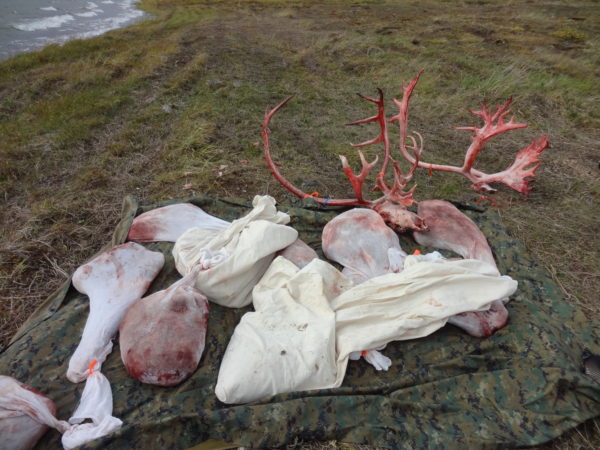
Caring for meat is of utmost importance when hunting. Many hunters struggle with meat care on day hunts let alone in the backcountry. When hunting in the backcountry meat could be exposed to the elements for days on end. Make sure to follow certain rules to mitigate meat loss.
When caring for backcountry meat, keep three words in mind: cool, clean and dry. Maintaining these conditions in adverse circumstances can be challenging, but it’s usually possible if you’re adaptive and you use your imagination.
Wild Game Meat Cleanliness is Key
If conditions allow, meaning the insects aren’t getting all over your meat, allow the bone-in quarters and large boneless pieces of meat to air-dry for a while after you remove it from the carcass. It builds up a dry crust, or rind, that offers protection to the meat and allows for a cleaner, neater pack-out job. The rind forms especially quickly in dry, breezy conditions.
If bugs or dirt is an issue, put the meat into breathable game bags as soon as you cut it away from the carcass. There are a number of excellent game bags on the market, including those made by Alaska Game Bags, T.A.G., and Caribou Gear.
Importance of Air Circulation
Hang the full game bags in a shaded area where they can get some breeze. Be conscious of where the sun is in the sky. Always try to hang your meat on the north facing side of a tree. In treeless areas, the north facing side of a rock or ridge will always be cooler than the south facing.
You want to allow airflow between the quarters and large pieces, so don’t stack them together. If you need to use tarps or plastic sheeting to protect them from rain or snow, put down a buffer of brush to keep the plastic from making direct contact from the meat. If you need to line your pack with plastic in order to keep it clean while transporting meat, then make sure to remove the meat as soon as you arrive at your destination.

When storing game bags full of meat on the ground, place them on a framework of limbs, antlers, or rocks. This framework structure allows air to circulate freely beneath the bags.

Tips for Float Trips
On float trips, the water is often much cooler than the air during the daytime. Think about resting the meat in the hull of a raft or canoe at night, where it’s cooled by the water beneath. If the floor of the boat is wet or leaky, lay down a pile of brush to keep the meat clear of any water. Pile more brush on top of the meat and cover with a tarp if there’s a chance of rain or snow.
Scavenger Mitigation
It’s important to keep bears, coyotes and other scavengers at bay whenever you are absent from your stash of meat. Make your prized meat hard to get to by hoisting it into a tree or otherwise getting it out of reach. Leave the innards that you don’t want where they are easy to get at, in order to divert the attention of unwanted visitors.
Leave clothing draped over the meat or hanging nearby; hang a trash bag or tarp so that it flaps in the breeze; urinate on trees or shrubs around the meat, or directly on the ground nearby. All of these will help give scavengers and predators some pause before they maul your cache.





Conversation